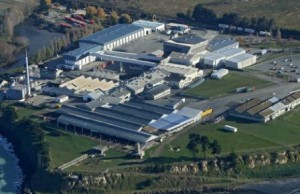 Alliance Group’s $8.6 million new venison plant at its Smithfield site, near Timaru, is now operating at full capacity.
Alliance Group’s $8.6 million new venison plant at its Smithfield site, near Timaru, is now operating at full capacity.
New Zealand’s leading meat processor and exporter is processing up to 420 carcases a day at the plant, which serves the company’s upper South Island suppliers.
Until now, Smithfield has only processed sheep and lamb, so the venison plant marks a major milestone for Alliance. More than 50 workers are based at the venison plant, which operates most of the year.
Murray Behrent, general manager of livestock says: “Alliance Group has invested in Smithfield as part of its dedication to delivering exceptional product quality and food safety standards. It is also a reflection of our confidence in the region and we have received great support from our suppliers, who are producing the quality livestock that we require.”
“Smithfield is yet another example of Alliance Group’s ongoing investment to ensure we meet the needs of our suppliers,” he adds.
The outlook for venison remains positive and the investment at Smithfield showed the company was focusing on processing a variety of products for global markets, says Behrent.
ViaScan to be installed at Smithfield in the next year
The new venison plant was built to accommodate Alliance’s innovative ViaScan meat scanning technology, which will be installed within the next 12 months at Smithfield, the company says.
ViaScan visually analyses carcases measuring the lean meat, fat and bone, to capture yield performance levels. It has been available since 2003 for analysing sheepmeat, and is already in use at eight Alliance Group plants. The company announced it was first to be extended to its venison suppliers at the Alliance Makarewa in Southland in July this year.
Along with providing suppliers with the opportunity of improving returns, ViaScan also aligns farmers with current market information and helps them with decision-making and the selection of good genetics.
“Exceptional product quality and food safety standards are vital for Alliance Group’s export market,” said Behrent when announcing the move. “We’re targeting high-end consumers with discerning palates who rate meat quality highly when making purchasing decisions and ViaScan helps our suppliers produce the quality livestock that is required.”
ViaScan will also mean suppliers can measure the performance of each individual carcase, particularly when the National Identification and Tracing Scheme (NAIT) is introduced in February 2013 for deer, says Behrent.
Smithfield is one of the three Alliance premises selected by Marks & Spencer to provide chilled New Zealand lamb for its UK retail stores. It is also one of the five first plants to introduce the new Ovine Post-Mortem Inspection system of sheepmeat carcase checks this year.
In 2011, Alliance Group completed a $15 million project to upgrade its Mataura beef plant in Southland.


